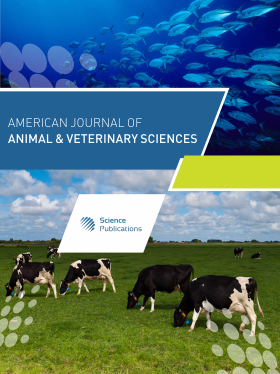Climate Zones and Morphometric Parameters of Apis mellifera carnica Bees
- 1 Kazakh Research Institute of Livestock and Fodder Production, Almaty, Kazakhstan
Abstract
The Apis mellifera carnica is the most prevalent bee population distributed in the different climate zones of Kazakhstan. In this study, ten bee colonies of the A.m. carnica breed from six bee farms were selected for research, from six climate zones: Desert, semi-desert, steppe, forest-steppe, foothill, and mountain, and different regions: Southern, northern, eastern, western Kazakhstan. During the period of full activity, 30 samples of the right front wings, legs, proboscis, hooks, sternite, and tergite were taken from each bee family. The obtained experimental material was processed by methods of variational statistics (variational series, arithmetic mean, arithmetic mean error, Coefficient of Variation (CV), and correlation coefficient). The results revealed that the highest value of the cubital index was found in bee samples living in a semi-desert, while no significant differences were recorded between the dumbbell index indicators of the bee samples from different zones. The discoidal displacement value was the highest in bees of the semi-desert. A significant (p<0.05) difference was established between the indicators of this trait in bees in forest-steppe, foothill, and mountain zones. According to the development of exterior features, the bee populations were divided into 4 zones. Thus, the highest proboscis length and sternite length and width were found in bees of the foothill. The highest tergite width and length, wax mirror length and width, and the number of hooks were in the bees of the steppe zone. The tarsal index was developed in bees living in the mountain zone and the length and width of the right wing were developed in bees living in the forest-steppe zone. The acquired abilities can be inherited in the future, which will allow the creation of new ecotypes through breeding work.
DOI: https://doi.org/10.3844/ajavsp.2023.243.248

- 4,211 Views
- 2,572 Downloads
- 4 Citations
Download
Keywords
- Climate Zones
- Cubital Index
- Discoidal Displacement
- Dumbbell Index
- Morphometry
